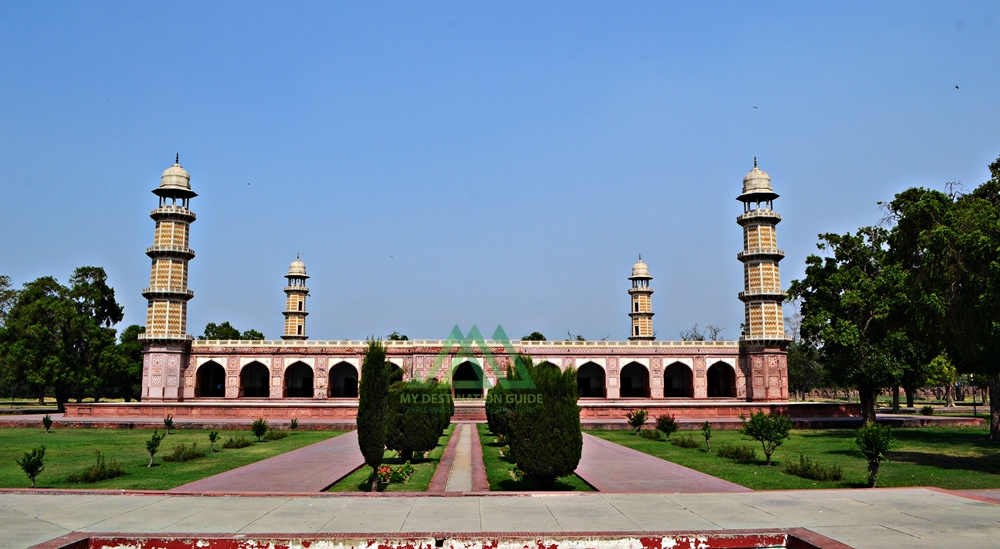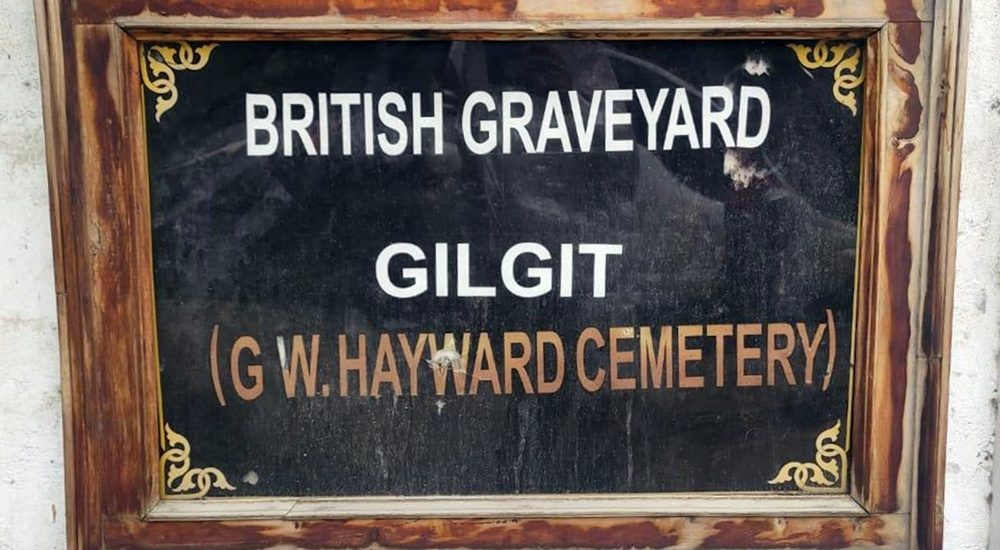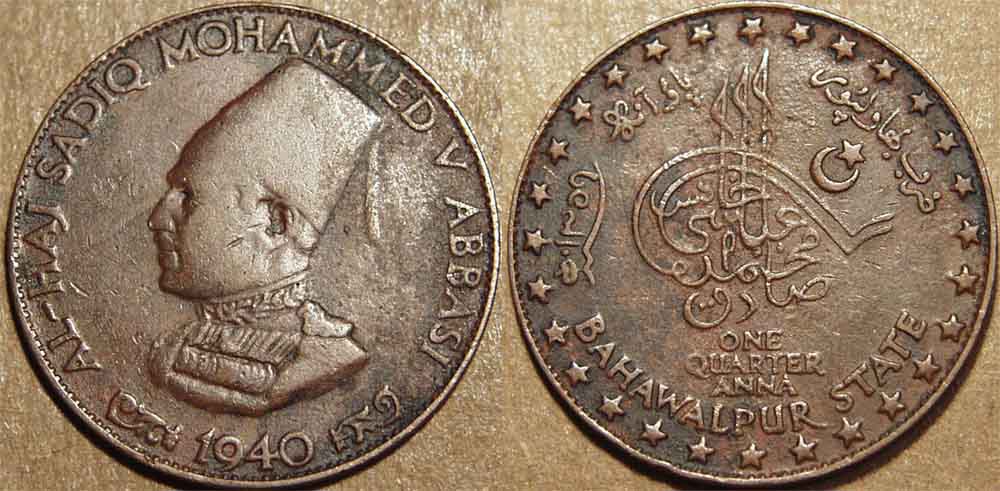Exploring the Splendor of Jahangir’s Tomb in Lahore, Pakistan
Jahangir’s Tomb, a magnificent architectural masterpiece located in Lahore, Pakistan. Situated in Shahdara, on the banks of the Ravi River, it stands as a testament to Mughal grandeur. This tomb is not only a historical marvel but also a symbol of artistic brilliance.
Uncovering History
The origins of Jahangir’s Tomb can be traced back to the love of Emperor Jahangir and his wife Noor (Nur) Jahan for the lush garden where it now stands. The garden, in fact, known as Dilkusha Garden, was initially established by Nawab Mehdi Qasim, a special curator of Emperor Akbar. It eventually became the Queen of India’s sanctuary, adorned with beautiful trees and fountains. This garden played a crucial role in the lives of Jahangir and Noor Jahan. It served as their point of departure and arrival during their journeys to and from Kashmir.
Emperor Nuruddin Salim Jahangir was the fourth Mughal ruler in the subcontinent. He continued his father Akbar’s tradition of making Lahore the center of official affairs. Upon Jahangir’s death in 1627, his body was transported to Dilkusha Garden in Lahore for burial, where the construction of his grand mausoleum would commence.
The Marvelous Construction
Emperor Shah Jahan is often credited as the head designer of Jahangir’s Tomb. However, many historians believe that his wife Noor Jahan had a significant influence on the project. The Persian influence on the design and her inspiration from her father’s tomb in Agra, the Tomb of Itmad-Ud-Daulah, is apparent in the structure.
Noor Jahan not only played a role in the architecture but also in designing the gardens. Later, it became her permanent residence after Jahangir’s passing. Evidence suggests that she personally financed much of the construction. The tomb took a decade to complete, from 1627 to 1637, at a cost of one million rupees of that era.
Renovation and Restoration
During the Sikh rule, Jahangir’s Tomb faced a period of desecration and damage. It was used for various purposes, including as an army headquarters and a residence. Priceless art within the inner chambers was destroyed and pillaged. Even after the fall of the Mughal empire during the British occupation, the tomb suffered further indignities. It was used for coal dumping during the construction of a railway line during British raj.
However, the British later undertook efforts to restore the tomb complex and Akbari Sarai to its former glory. The image of Jahangir’s Tomb even graced the 1,000 Pakistani Rupee note until 2005, a testament to its historical and cultural significance.
A Glimpse of the Layout
Jahangir’s mausoleum is set within a large quadrangle enclosed by a thick wall, with grand entrances to the west and east. The eastern entrance gate was destroyed due to the river, leaving the western gate as the primary entrance. This gate features a small mosque and is accessible through Akbari Sarai, an enclosure reachable from two gates facing each other to the north and south. The gate’s pietra-dura work, white marble inlaid in red sandstone, remains a masterpiece of artistry.
Entering through the gate reveals a garden layout known as the Persian Chahar Bagh scheme, divided into four squares with walkways and water channels, mirroring the paradise gardens of Islamic tradition.
A Closer Look at the Architecture
Jahangir’s mausoleum, unlike the traditional domed Mughal tombs, features a flat roof, breaking with convention. Standing on a 5-foot high podium, the 22-foot-tall single-story mausoleum boasts a square plan with the main grave surrounded by forty rooms, each uniquely designed. These rooms once served as places for Islamic scholars to recite the Quran, honoring the king’s soul.
The corridor surrounding the mausoleum is adorned with elegant mosaics, floral frescoes, and verses from the Quran. Carved marble jali screens allow light to filter in various patterns, facing toward Mecca. The rooftop features intricate marble work on the ceiling. The artwork is reminiscent of a Persian carpet, reflecting the Timurid architectural style from Central Asia.
The Towering Minarets
Four octagonal minarets rise from the corners, topped with white marble cupolas measuring 100 feet in height. These minarets are adorned with zigzag inlays of white marble and yellow stone. Each minaret, with its five floors, offers a scenic view of the city. The exterior of the mausoleum is clad with red sandstone, featuring rich panel decoration inlaid with marble motifs.
The Cenotaph
Jahangir’s cenotaph, situated in an octagonal chamber at the center of the mausoleum, is a sight to behold. The floor is adorned with floral designs using various stones, while the walls are adorned with mosaic patterns. The cenotaph itself is a takhtgah, or “throne,” decorated with white marble and precious and semi-precious stones. It features 99 traditional attributes of Allah with pietra dura inlays and Quranic verses on the flat top.
The Original Building
Some accounts suggest that the tomb structure was originally a three-story building with a Baradari (pavilion with 12 doors) on top, housing Jahangir’s grave amulet. However, during the Sikh rule, several Mughal-era buildings, including parts of Jahangir’s tomb, were dismantled. The Baradari was relocated to Hazuri Bagh, between the Badshahi Mosque and Lahore Fort. While the tomb’s roof was replaced with lime plaster, its historical significance endures.
Jahangir’s Tomb in Lahore, Pakistan, is a timeless testament to Mughal artistry and historical significance. Its architectural splendor, lush gardens, and rich history make it a must-visit for anyone interested in the glory of the Mughal Empire. Additionally, the neighboring structures, such as Asif Khan’s tomb and Akbari Sarai, provide deeper insights into the grandeur of a bygone era.











